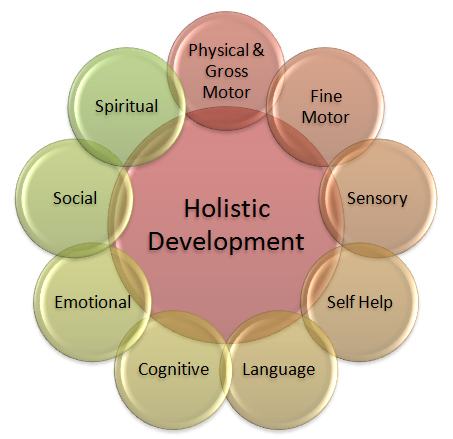Early Childhood Education and Care
File naming
Once you feel confident that you have covered the learning materials for this unit, you are ready to attempt this assessment.
To help Open Colleges manage your assessment, please use the following file-naming convention: [student number]_[assessment]_[assessment number].doc
For example 12345678_Support holistic development_31838B_03
Assessment Submission: CHCECE010 Holistic Development of Children In Early Childhood

When you are ready to submit your assessment, upload the file in OpenSpace using the Assessment Upload links in the relevant module of your course. If you need further assistance, the Student Lounge provides a ‘Quick Guide to Uploading Assessments’. Uploading assessments in OpenSpace will enable Open Colleges to provide you with the fastest feedback and grading for your assessment.
It is important that you keep a copy of all assessments submitted to Open Colleges.
Getting started
The assessment tasks in this booklet have been designed to allow you to provide evidence that demonstrates your competence in the unit CHCECE010 Support the holistic development of children in early childhood.
Your trainer will:
- answer any questions that you might have about the assessment
- assess your competence as required by the unit of competency, by making judgments about the evidence you have presented in line with the rules of evidence: validity, authenticity, currency and sufficiency
- provide feedback on the outcomes of the assessment process.
Introduction : CHCECE010 Holistic Development of Children In Early Childhood-Open Colleges Australia
You are required to complete a written assessment that involves responding to both short answer questions and case studies, and are required to complete a project for CHCECE010 Support the holistic development of children in early childhood.
In completing the final assessments, you will show evidence of your ability to:
- support the physical, social, emotional, cognitive and communication development of children in early childhood
- create an environment for holistic learning and development.
31838B/03 Project :
- This project is in three parts.
- You are required to complete each part of the project.
ORDER This CHCECE010 Holistic Development of Children Assignment NOW And Get Instant Discount
Part A – The whole child
This assessment task requires you to prepare a set of child development charts that summarise major achievements/milestones under each developmental area for children in the below age groups:
- 6 months – 1 year
- 1–2 years
- 2–3 years
- 3–4 years
- 4–5 years
- 5-6 years.
In each chart, for each developmental area, put in point form three (3) typical major achievements/milestones of children in the identified age range. For example, you may list the below major achievements under communication development for a child aged between 1-2 years as follows:
The 1-2 year old child can:
- say about 50 words but can understand whole sentences
- put two to three sentences together to form a simple sentence
- understand the meaning of actions words.
Keep in mind that this part of the task requires you to focus on the major achievements and milestones in each age range only.
Once you have listed major achievements/milestones, you are then required to identify in each chart an example of:
- a one-on-one interaction that could encourage development of the milestone skill
- how you could use daily routines such as, nappy changes, toileting and mealtimes as a way to support children acquire and practise skills
- an experience to support development of the milestone skill.
You must do the above for each achievements/milestone listed. For each experience suggested link it to an EYLF outcome.
| The 6 month–1 year old child typically can: | Interactions that encourage development of the milestone skill | Ways to support children acquire and practise skills as part of daily routines | Experiences to support development of the milestone skill | EYLF Learning Outcome that suggested experience links to | |
| Physical development
|
1.can sit on floor with lower back support
2. raise head upper chest and pushing up on arms and legs while lying on her stomach. Later on she will crawl and stand up against on object. 3.Reach for toys and hold with palmer grasp |
Sit on floor with child and play with her with her toys Interact with child at eye level and encourage her as she is showing signs of coordinating movement to begin to crawl Provide the child with interesting resources- tap and shake them to create interest in the objects- praise efforts to reach them and holding them in the palmer grasp | Place pillows behind the child Place her on her tummy on the mat after nap time some tummy time and encouraging her attempts While changing their nappies have sterilised objects that child can reach for and grasp top keep them busy while changing his or her nappies.
|
Sit infant with pillow and push a wheeled toy to her then pull it back so she can reach forward. Placing a toy bit further from the child so she can crawl and stretches towards the objects. Provide objects of interest that she can grasp safely and easily – should be safe to place in mouth. | Learning outcome4:
4 children are curious and enthusiastic participants in their learning. 1.3 children develop knowledge and confident self identities. 4.4 children resource their own learning through connecting with people, place, technologies and natural and processed materials. |
| Social development
|
1.makes eye contact when held with face about 20cm from face of adult looking at them
2.recognises familiar people and stretches arms to be picked up 3. shows definite anxiety or wariness at appearance of strangers |
EYLF Outcome 3: Children have a strong sense of wellbeing – Children become strong in their social and emotional wellbeing. E.g. “promote children’s sense of belonging, connectedness and wellbeing.” (p.31) NQS: Areas 1, 4, 5, 6
EYLF Outcome 5: Children are effective communicators – Children interact verbally and nonverbally with others for a range of purposes. E.g. “are attuned and respond sensitively to children’s efforts to communicate.” (p.40) NQS: Areas 1, 5 EYLF Outcome 3: Children have a strong sense of wellbeing – Children become strong in their social and emotional wellbeing. E.g. acknowledge children’s stage of emotional development and support them to develop resilience. NQS: Areas 1, 2, 5
|
|||
| Emotional development
|
1.
2. 3. |
||||
| Communication development
|
1.
2. 3. |
||||
| Cognitive development
|
1.
2. 3. |
ORDER This CHCECE010 Holistic Development of Children Assignment NOW And Get Instant Discount
Part B – Selecting experiences to support children’s holistic development
As you worked through the Learner Guide for this Unit of Competency you were asked to collect ideas for appropriate experiences that support the different areas of children’s development. Now it is time to collate your ideas into a Resource Kit. Your ideas for experiences must support the development of children aged 0-6 years.
Divide your Resource Kit into six sections as follows:
- physical development
- social development
- emotional development
- cognitive development
- communication development
- creative development.
In each section you need a minimum of three ideas; therefore you will have a total of 18 entries. For example, physical development will have three experiences as will social development and so on.
Each entry should be a maximum of two pages.
Ideas should be gathered from a minimum of five different sources. Sources include books, journals, internet articles, CDs and so on.
The following information should be included in each entry:
- name of the experience
- specific age range (in years and months) for whom the experience is appropriate
- suggested group size
- skills supported by the experience
- resources required for the experience for example, a list of equipment, words of a song, recipe, instructions for playing a game
- how the experience will be conducted (teaching method used to intentionally scaffold children’s learning)
- suggested interactions to support children’s efforts and achievements.
Your Resource Kit can be either paper-based or in an online format using a free downloadable software product. If presenting the tool in an online format, make sure you provide a Web link and instructions so that your Assessor can easily access the tool.
ORDER This CHCECE010 Holistic Development of Children Assignment NOW And Get Instant Discount
Get CHC50113 Diploma of Early Childhood Education And Care Assignment written by experts.



